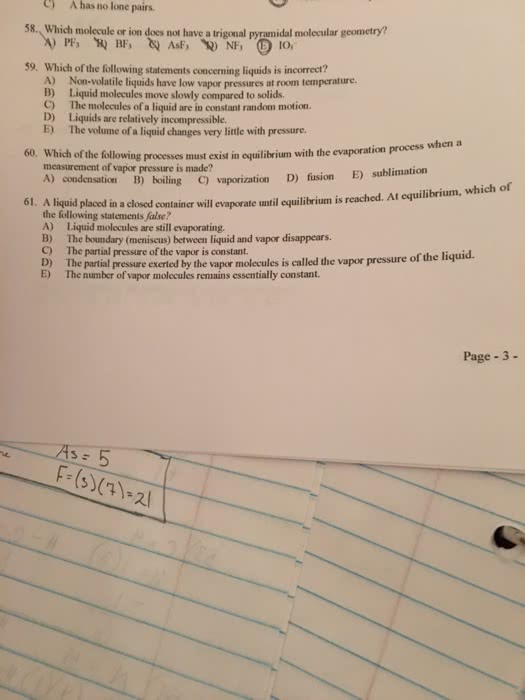CHEM 1110 Lecture Notes - Lecture 15: London Dispersion Force, Partial Pressure, Vaporization
Document Summary
Mixing gases together causes an increase in pressure. Evaporation: escape of particles from the surface of a liquid. Vapor pressure: pressure exerted by the gaseous particles above the surface of a liquid. Heat of vaporization: energy required to change 1 mol of liquid to its vapor. Heat of condensation: energy released when 1 mol of vapor condenses to the liquid phase. Viscosity: ability of a liquid to flow. Surface tension: tendency of a liquid to minimize its surface area. Dipole forces: electrostatic attractions between the positive end of one molecule and. Intermolecular forces: electrostatic attractions that occur between molecules or atoms the negative end of another molecule. Dispersion / induced dipole / london forces: attractions that occur between temporary dipoles in non polar atoms/molecules. Hydrogen bonds: attractions between the partially positive h atom in a molecule to the nonbonding electrons on a highly electronegative atom (fon) of another molecule. Equilibrium: rate of evaporation and condensation are equal.


